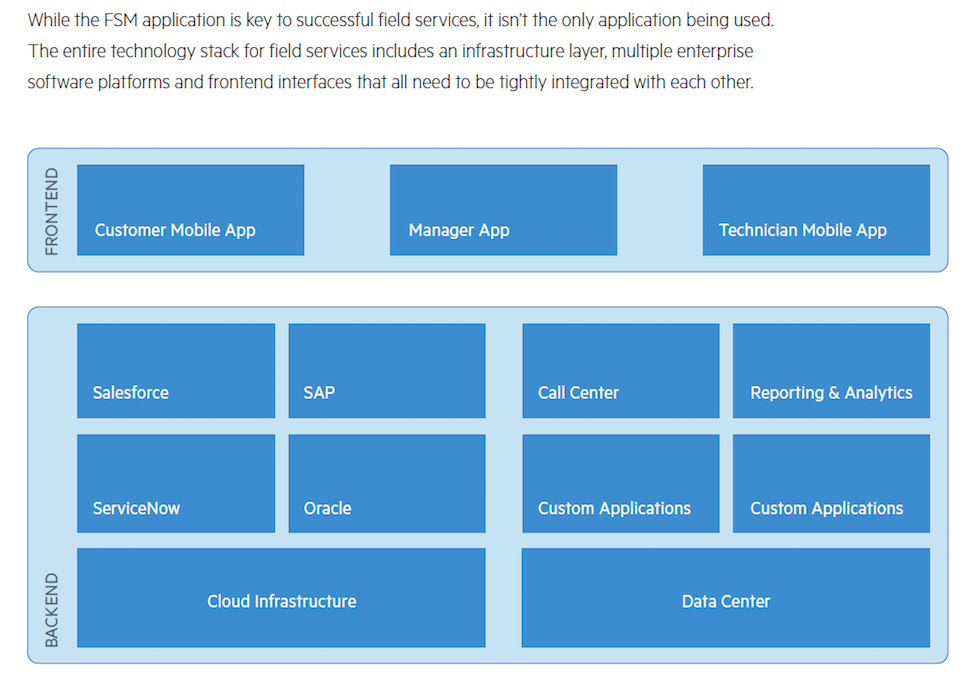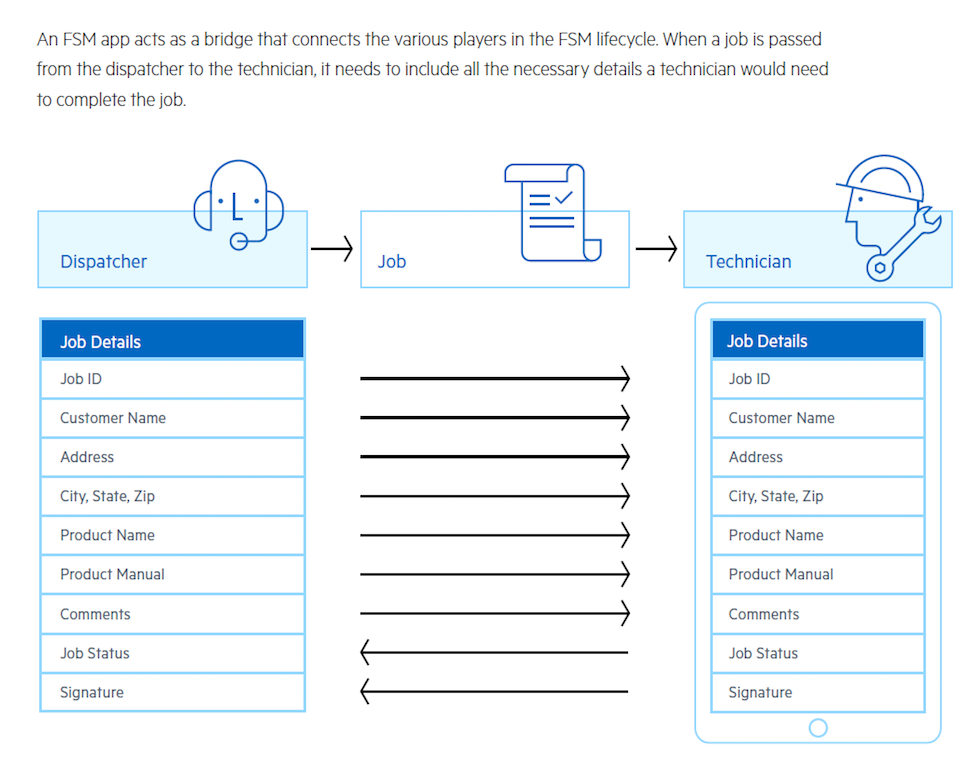Field Service East 2026
August 10 - 12, 2026
JW Marriott Orlando Grande Lakes, FL
Addressing the 3 Most Common Pitfalls of Field Service Apps: Support Continuity, Speed and Offline Data Management
This post is based on the findings of the whitepaper, “Field Service Apps and the Data Management Elephant,” written and produced by Progress.
Service is a valuable, growing aspect of current business development for many manufacturers, and within service organizations, mobile is becoming a key point of adaptation where brands can win an advantage. However, reaping the rewards of mobile development is contingent on managing the complexity that comes from adopting sophisticated Field Service Management (FSM) apps. FSM apps must be continuously adaptable, ready to meet the dynamic needs of technicians in the field while maintaining integrity with data sources across the business. This is impossible without an efficient, purpose-built technology stack.

Support Continuity

A host of common challenges must be overcome to get the most out of an FSM app. For example, without stable connectivity, front-end service apps can have difficulties transmitting the significant amounts of data they must transfer to and from internal data sources, leaving technicians without key information. Across the entire FSM process, granularity and a mix of structured and unstructured data add complexity to data management. Without accurately categorizing and storing data across the organization so that it is accessible within an FSM app, it’s likely that it simply won’t be there. The need for backend integrations to connect these disparate sources is typically too much for app technicians to bother with, yet it leaves a lot of relevant information inaccessible in moments where it could have a significant impact.
Speed
Ultimately, the most common complaint that executives hear from technicians is that their mobile tools are not fast enough. In the field, time is money, and clunky solutions that add unnecessary time to service calls have a compounding negative impact. The problems that are making apps slow and difficult to use are structural in most cases and can’t be addressed by a single solution. Instead, service teams must rethink the software delivery tool chain itself to provide app developers with more fluent, time efficient tools. A unified approach to data management can be brought to bear by adopting a serverless, low-code development platform, pre-built app templates and readymade enterprise platform integrations. This allows developers to focus on the creation of better UX features without getting bogged down in data plumbing. By speeding up time of development, a more innovative approach to app development is possible with major ramifications for the organization at large. Speed in both development and app functionality should be considered a top priority.
Data Management and Remote Access
Data volumes associated with service environments can make something as simple as providing a quote on a product difficult to access in a timely manner when sorting among many thousands of possible SKUs. This process becomes more complex when communicating data back and forth to place an order. If this process takes too long, it’s possible for valuable transactions to be lost or abandoned. One part of the solution is to adopt a single universal data format, such as JSON, that allows data sources and tools to speak a common language. This helps by reducing friction between sources and saving time in communications without a need to convert data to parallel formats.
The nature of service takes technicians to sites where weak or non-existent access to WiFi connectivity are common, yet they still require access to important information and functionality. The best way to do this is through data caching, where data accessed from a central repository is stored, and changes made to the data while offline are updated when connectivity is restored. That said, it’s important to have rules in place that can make sense of potential conflicts during data reconciliation.

As predictive services based on IoT integration come closer to fruition within leading organizations, there is a growing need for data platforms that can achieve greater value by actively finding and reacting to aberrant information. While this capability is difficult to develop, it will pay dividends quickly. Faster development, mobility and the ability to foster good data management practices are essential to managing service as new trends and technologies emerge.
Looking to learn more about how the right solution can dramatically improve the performance of FSM apps? You can read the full whitepaper this post is based on when you download it here, or visit www.progress.com for more great content.